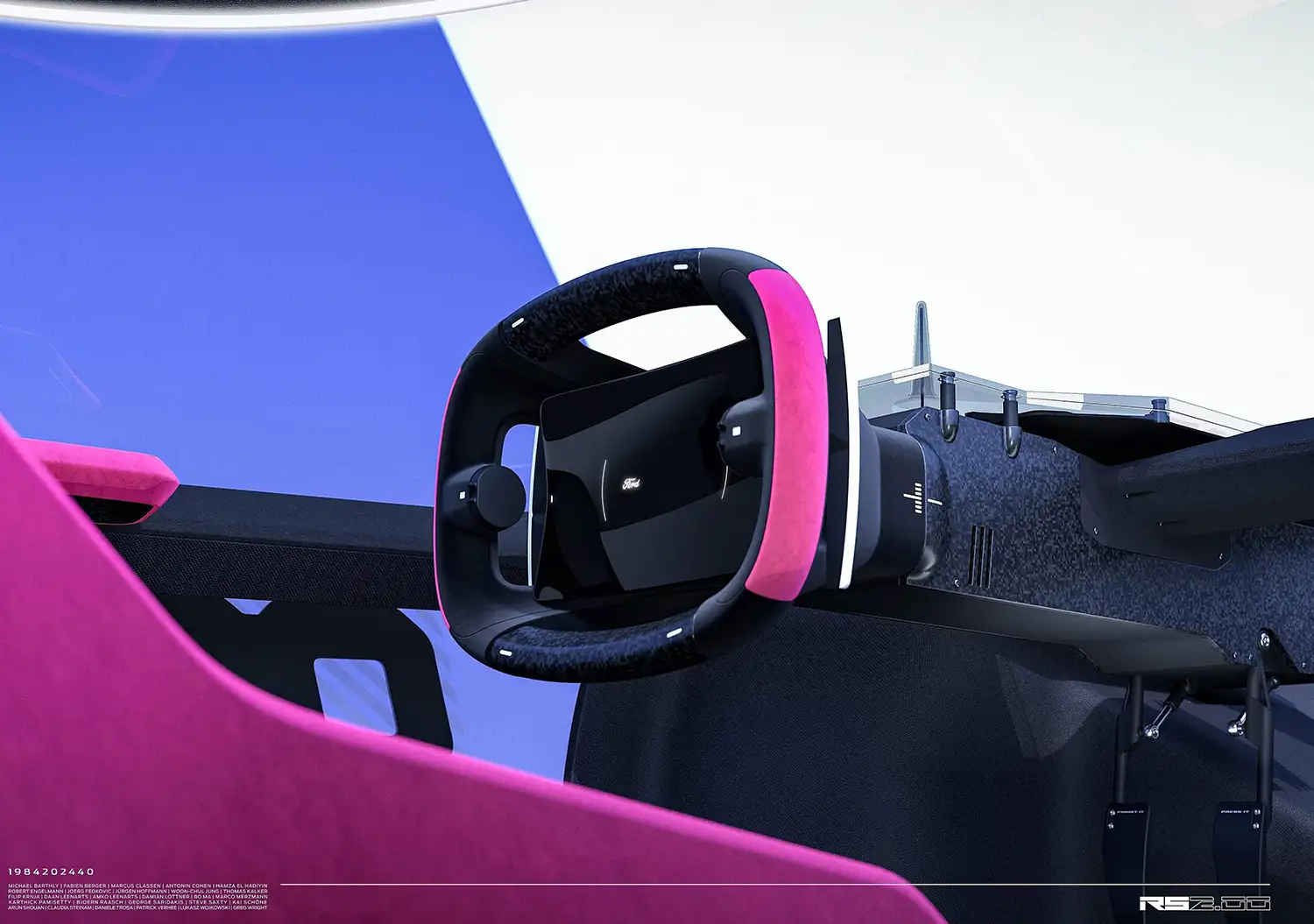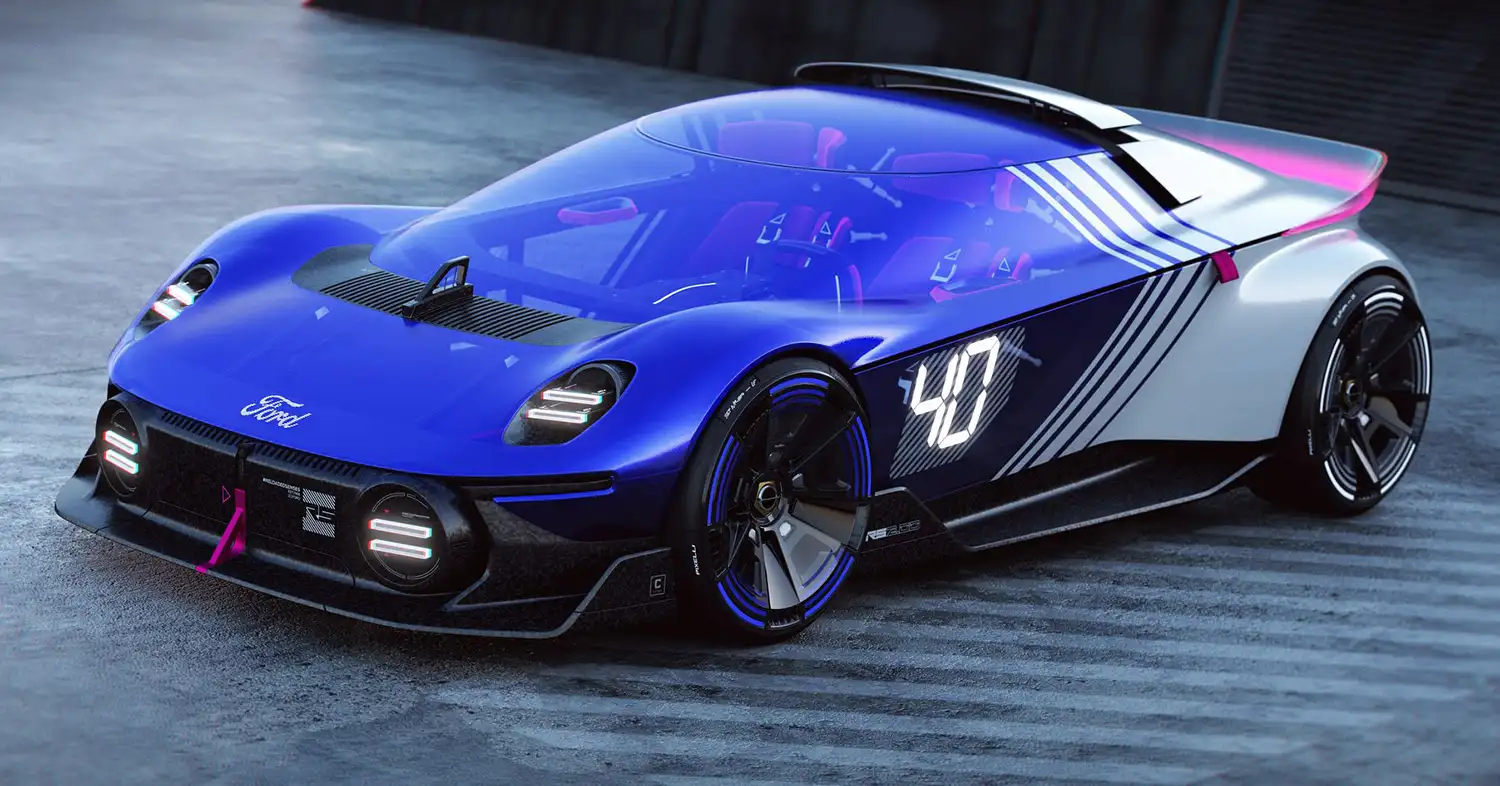
Ford RS2.00 Concept (2024)
The Ford RS2.00 Concept is a virtual concept car created to commemorate the 40th anniversary of the iconic 1984 Ford RS200, a renowned Group B rally legend. The name “RS2.00” nods to both the original car and the virtual realm, with “2.00” evoking “v2.0” or “Version 2.0”. This dual reference reflects the car’s video game-inspired essence while also hinting at its role as the next chapter in the RS200 story. Developed by a team of passionate designers driven solely by their love for the original car and video games, this concept showcases the creative spirit of the Ford of Europe Design Team and their ability to embrace future challenges in automotive design.
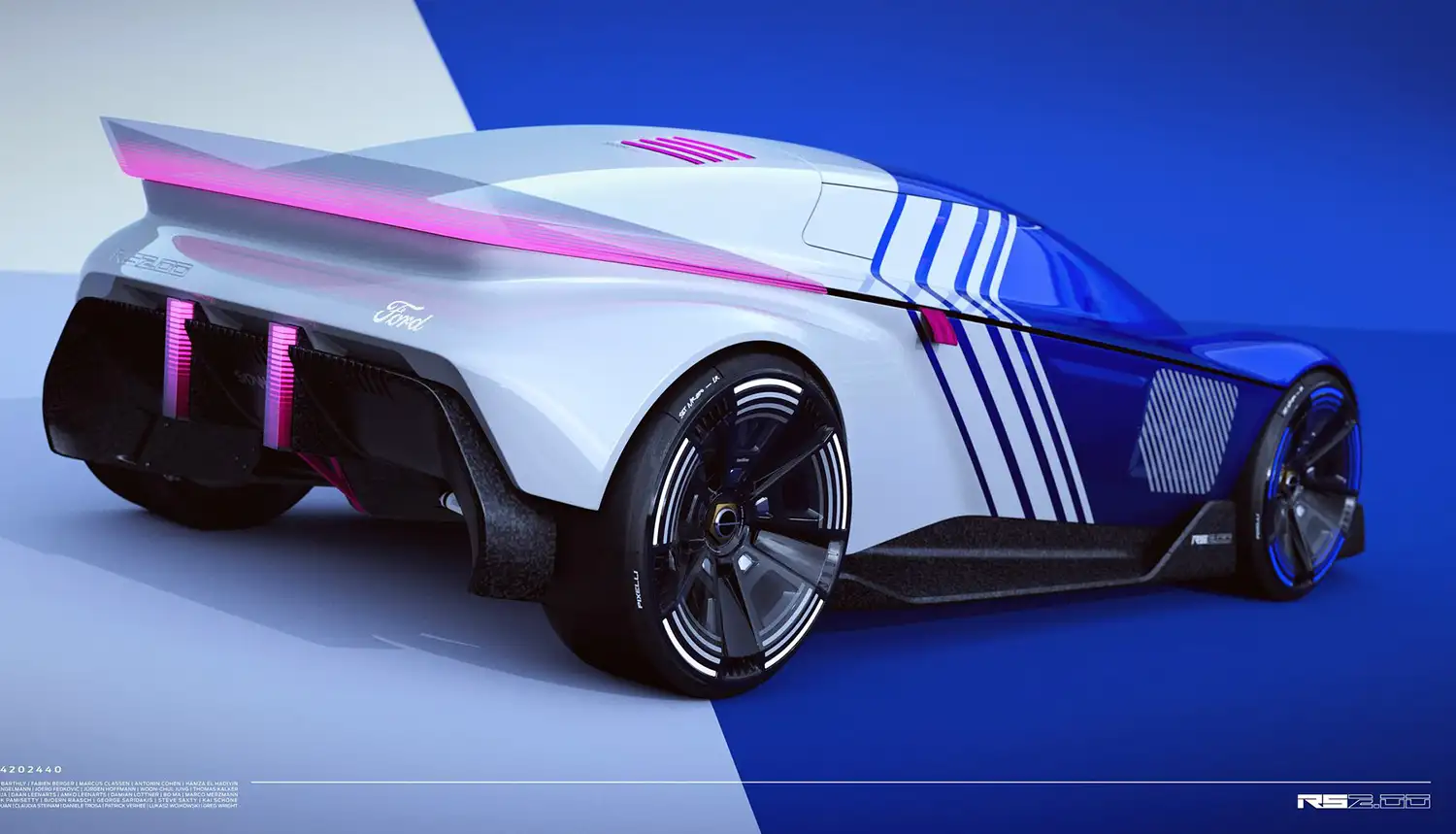
“SKUNKDESIGNWORKS”
The RS2.00 Concept was born from an unconventional development process. It all began when Amko Leenarts, Ford of Europe Design Director, met with author Steve Saxty during the preparation of Steve’s latest book in the “Secret Fords” series. They decided to conclude the book with a forward-looking design exercise inspired by the 1984 Ford RS200. The design team initially produced several sketches and artworks for inclusion in the “RS Special”. However, driven by their passion for the RS200, some designers felt that more could be achieved.
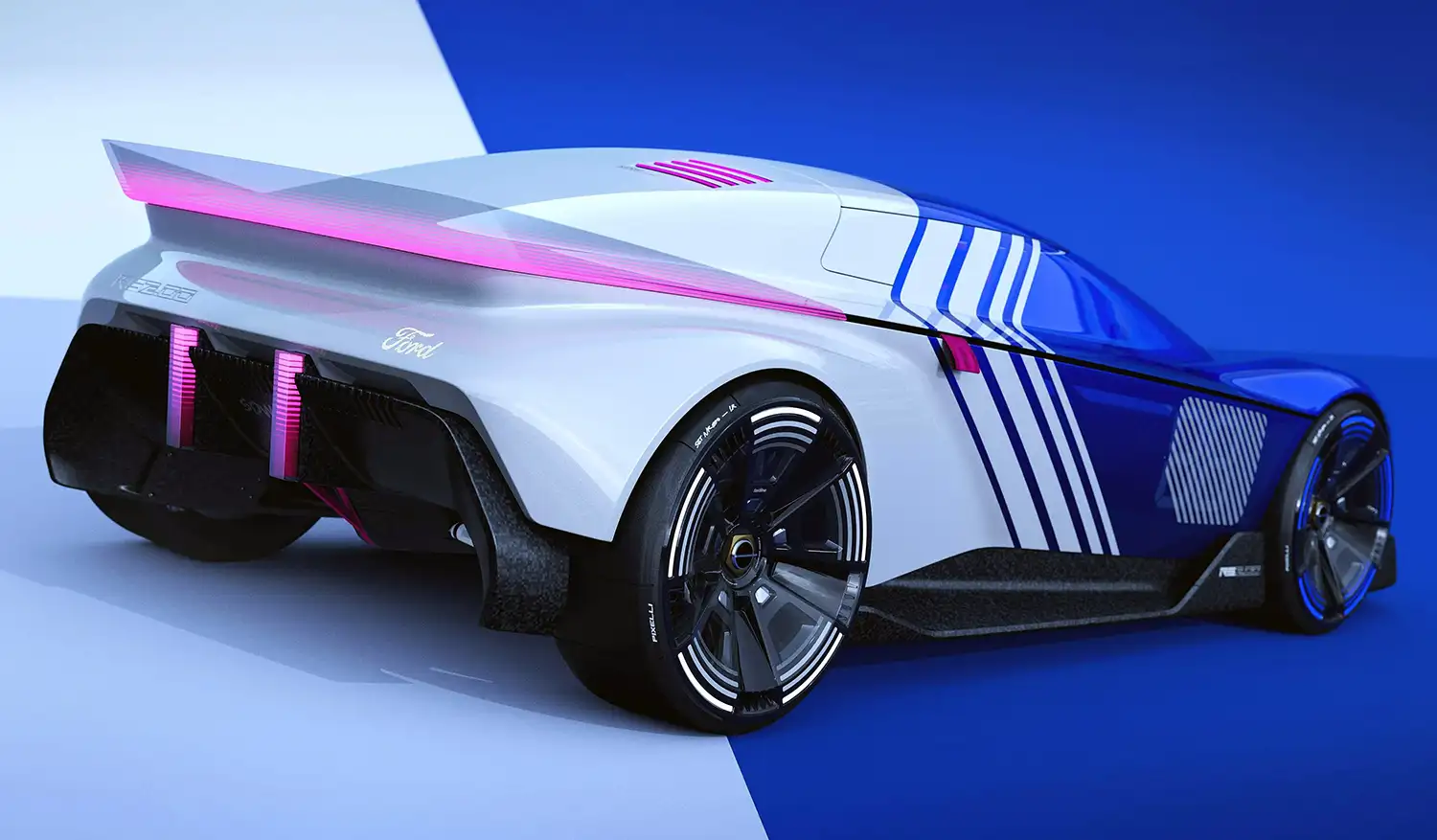
This group of designers took it upon themselves to explore the project further creating additional sketches to refine the design theme, and developing a virtual 3D model of the car-all during their spare time, completely off the radar in a true “Skunkworks” style. When Amko Leenarts and the design leadership team eventually discovered this initiative, they chose to support it. They allowed the project to continue in this informal, autonomous manner throughout the entire development of the RS2.00 Concept: “SkunkDesignWorks” (SDW) was informally established.
The design team worked in that unique, collaborative way, with volunteers joining the project progressively. All decisions were made by the designers themselves, ensuring that the final product was truly a result of their collective vision and creativity. This approach enabled them to experiment with new tools and softwares, maintain agility, and foster unexpected ideas. Traditional methods, such as clay modelling, were employed as well to ensure that the RS2.00 Concept remained a visually appealing and human-scaled machine. The final outcome is a pure design exercise intended to showcase the creative potential of the Ford of Europe Design Team.

From racing legend to gaming icon
The goal for the RS2.00 Concept was to carry forward the challenging spirit of the RS200 into an entirely new realm: video games. Ford has a strong presence in the gaming world with a wide representation across various video games franchises. The RS2.00 Concept targets then a completely different audience from the original car, aiming to educate them about Ford’s remarkable heritage. This car has been meticulously designed to be the ultimate gaming companion, adaptable to various types of video games and environments.
This first iteration of the RS2.00 Concept, dubbed the “Apex Hero”, is the closest to the original road-going version of the RS200. It was created with agility and fun as its core values, excelling on tight roads and delivering driving excitement even at low speeds. Flexibility is central to the RS2.00 Concept’s philosophy; its design allows for modifications to create new versions with different characteristics and can accommodate various powertrains with various levels of electrification.
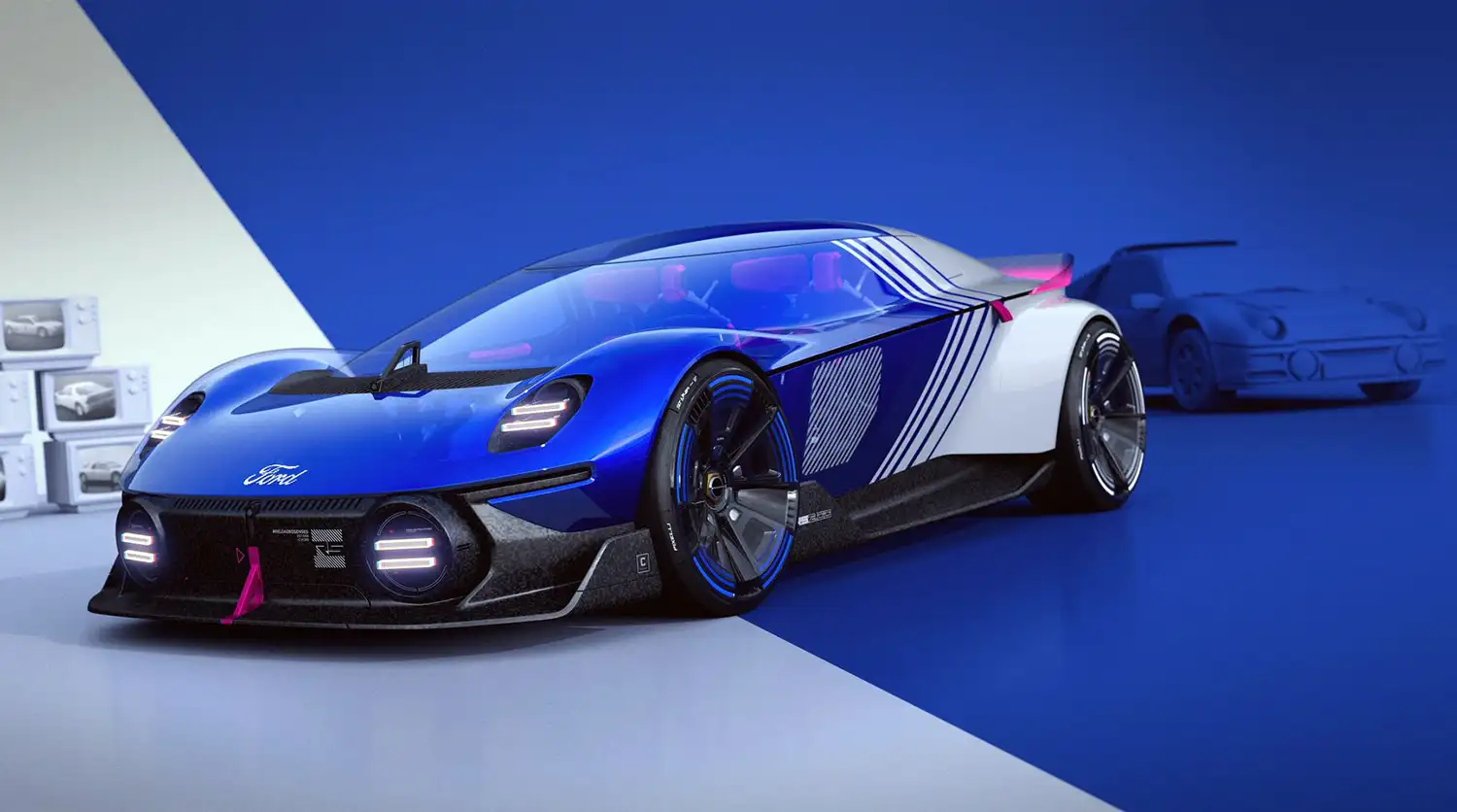
The friendly monster
The overarching design theme of the RS2.00 Concept is called “the friendly monster.” in the original brief given by Ford to Ghia for designing the 1984 RS200, it was explicitly stated that the car should not appear as “an aggressive-looking machine.” indeed, during the Group B rally era, the RS200 stood out as less brutal and raw compared to its competitors, yet it still delivered monstrous performance. We sought to capture that spirit by designing an approachable-looking vehicle, aligned with the optimistic philosophy of current Ford products. The design intentionally avoids menacing expressions and aggressive lines, favoring an almost playful overall aesthetic despite being a genuinely capable machine.
Another key aspect of the design is the transparent front portion of the car, which highlights an unprecedented interior-to-exterior visual connection. This feature directly results from the car’s gaming nature, aiming to share the sensation of speed with the player. From the cockpit view, it connects the driver to the road with multiple visual touchpoints, removing many typical obstructive elements like the a-pillars. From a third-person view, it showcases the driver in action, emphasizing the connection between man and machine. From a purely design perspective, it creates numerous styling opportunities by allowing interior elements to be visible from the exterior and vice versa. A notable example is the racing number on the side panels, which blends interior physical components with exterior graphical elements.
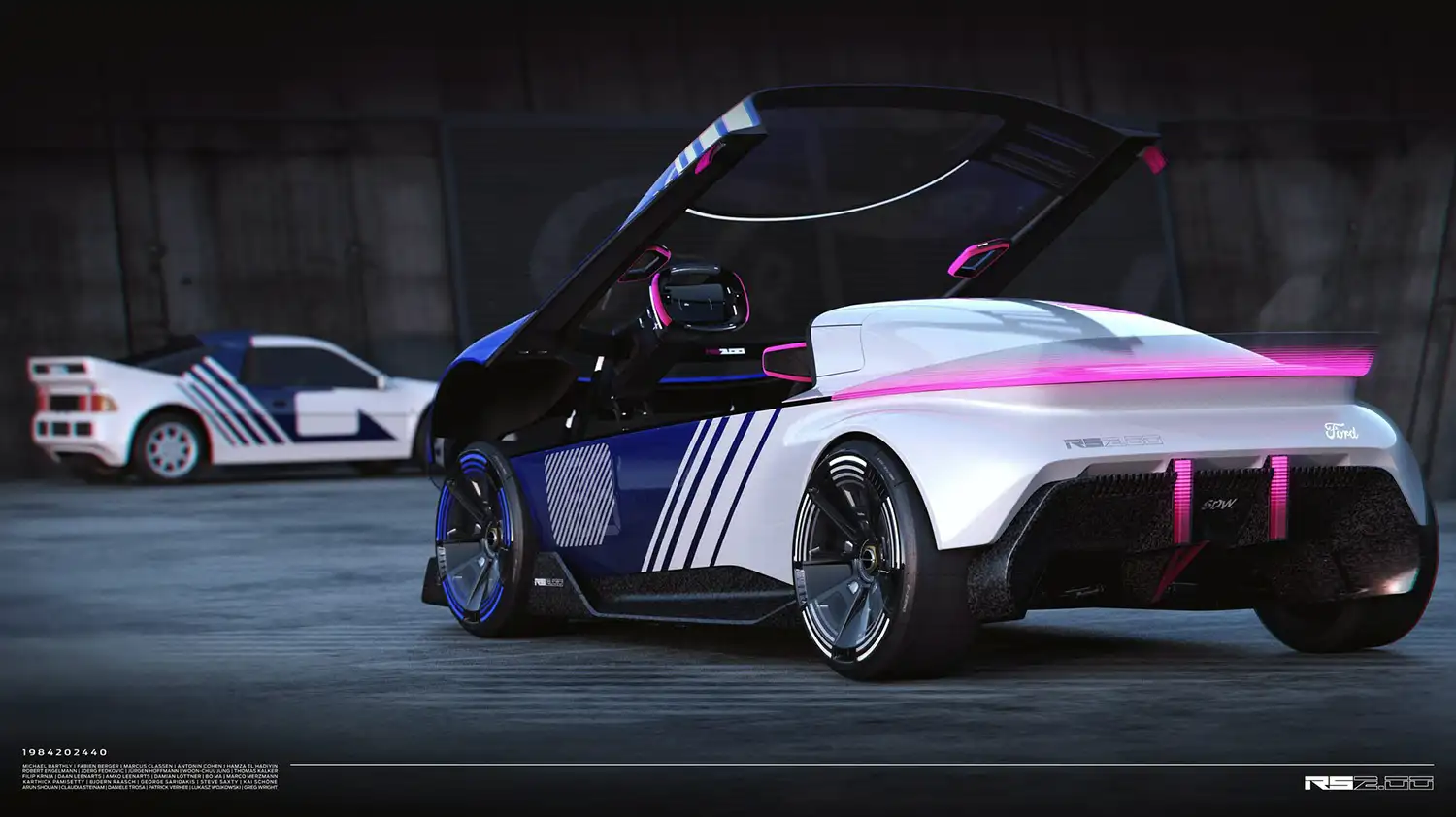
The interior design itself adds many features that enhance the player experience. The design is directly inspired by racing simulator devices, with most elements organized around a structural component visible from the outside. The seats are made of flexible pieces that adapt to the occupants body shapes and use their fixation systems to simulate different levels of driving sensations, by filtering or emphasizing the car’s movements. The steering column serves as the RS2.00 Concept brain, housing all the driver’s settings and preferences. Potentially, this component can be transferred from one car to another, eliminating the need for the user to readjust each time they switch vehicles. Its design draws inspiration from gaming computers, proudly displaying its technical elements. The only screen is located in the center of the steering wheel and includes all the primary interface elements. The light strip across the header acts as an active blind spot indicator, providing real-time feedback to the driver about overtaking attempts.
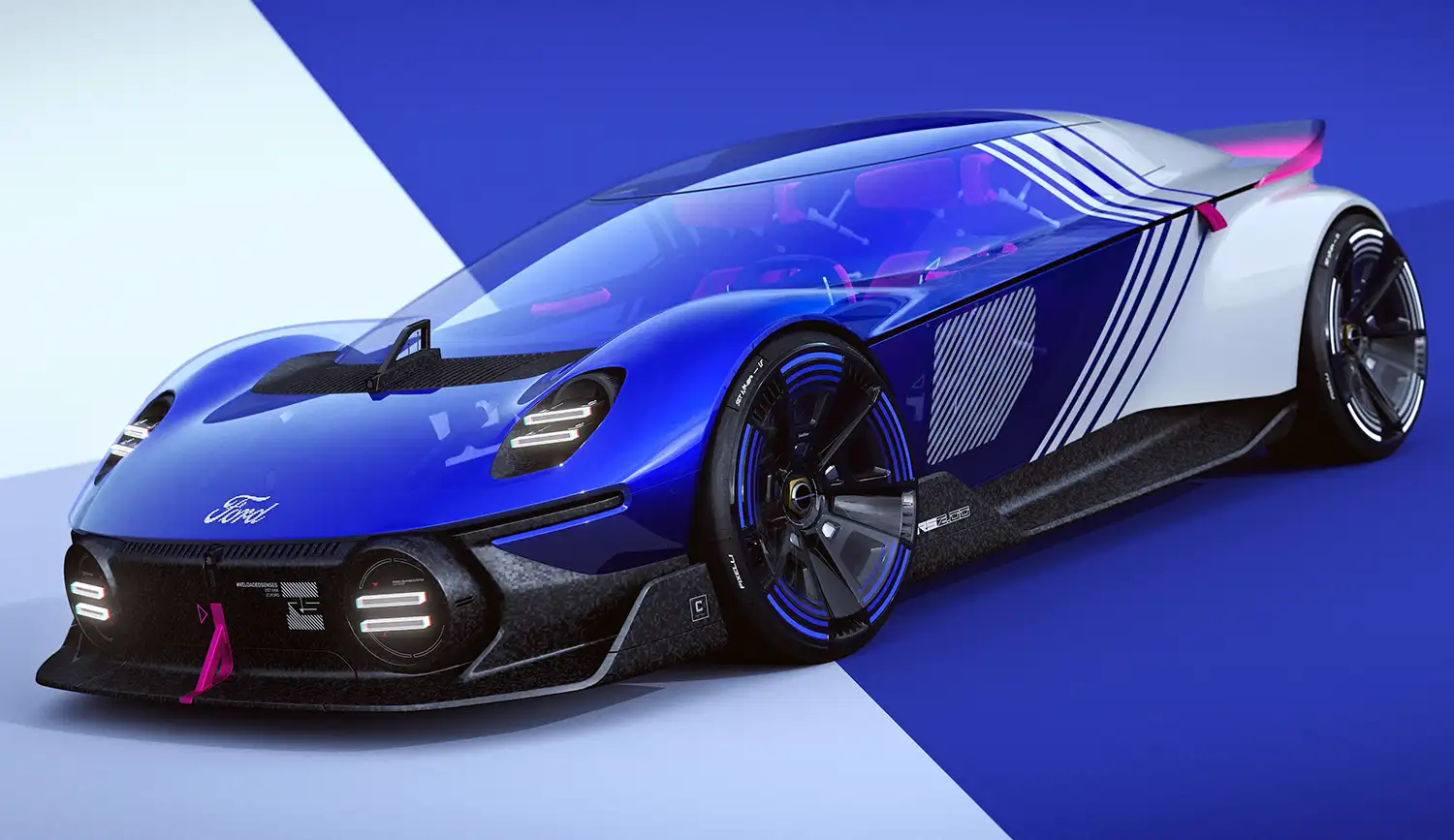
Between real and virtual
The design features of the RS2.00 Concept can be approached from two perspectives. Firstly, a more analog approach, highlights connections to the original 1984 RS200. Secondly, the “virtual twist” leverages the benefits of the digital world for a more unexpected design flair. The headlights serve as a prime example: while their overall four-round-eye appearance directly links to the original car, the light signature itself exhibits a constant glitching effect using holographic technologies. Another example is the “pixel carbon,” which, while appearing as standard forged carbon, reveals a unique pixelated pattern designed specifically for the RS2.00 Concept.
Visual entertainment for the player has not been overlooked, with features such as an active spoiler that adjusts to driving conditions, a hollow diffuser that showcases the rear suspension system in action, or the engine cover slots that are showing available power boost in real time.
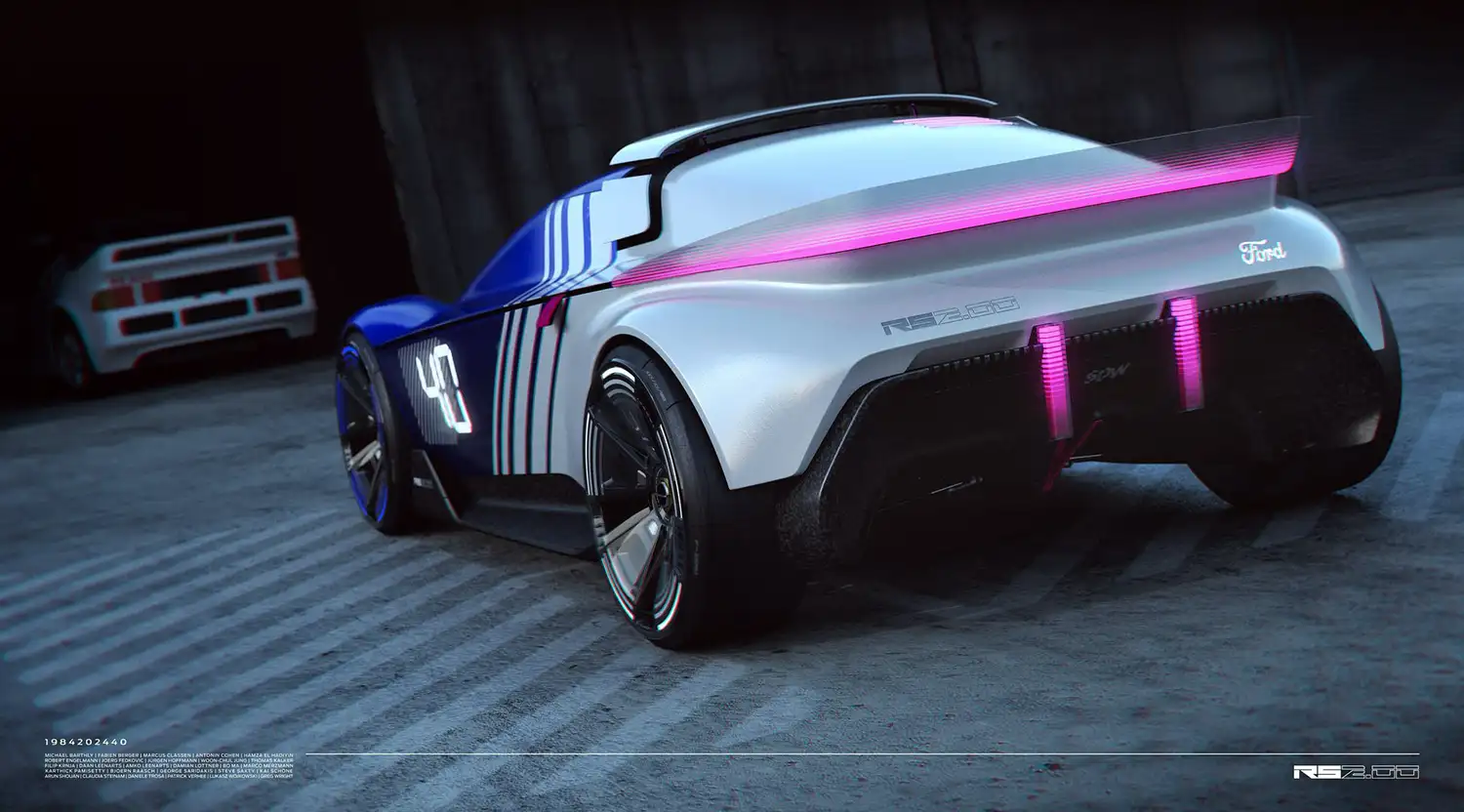
There is always more than one side to a story
The mission of the Ford RS2.00 Concept is unmistakable: to rekindle memories of the original 1984 RS200 on its 40th anniversary while simultaneously captivating a new generation of potential Ford enthusiasts. It envisions an alternative scenario where the RS brand ventures into uncharted territories, yet remains true to its core philosophy: delivering performance and driving excitement to a broad audience. Consequently, this initial “Apex Hero” version marks only the beginning of the story, inviting Ford enthusiasts to follow the RS2.00 Concept journey as it evolves through unexpected territories.
Source: Ford
This article was crafted with assistance from Chatgpt
